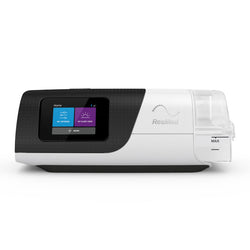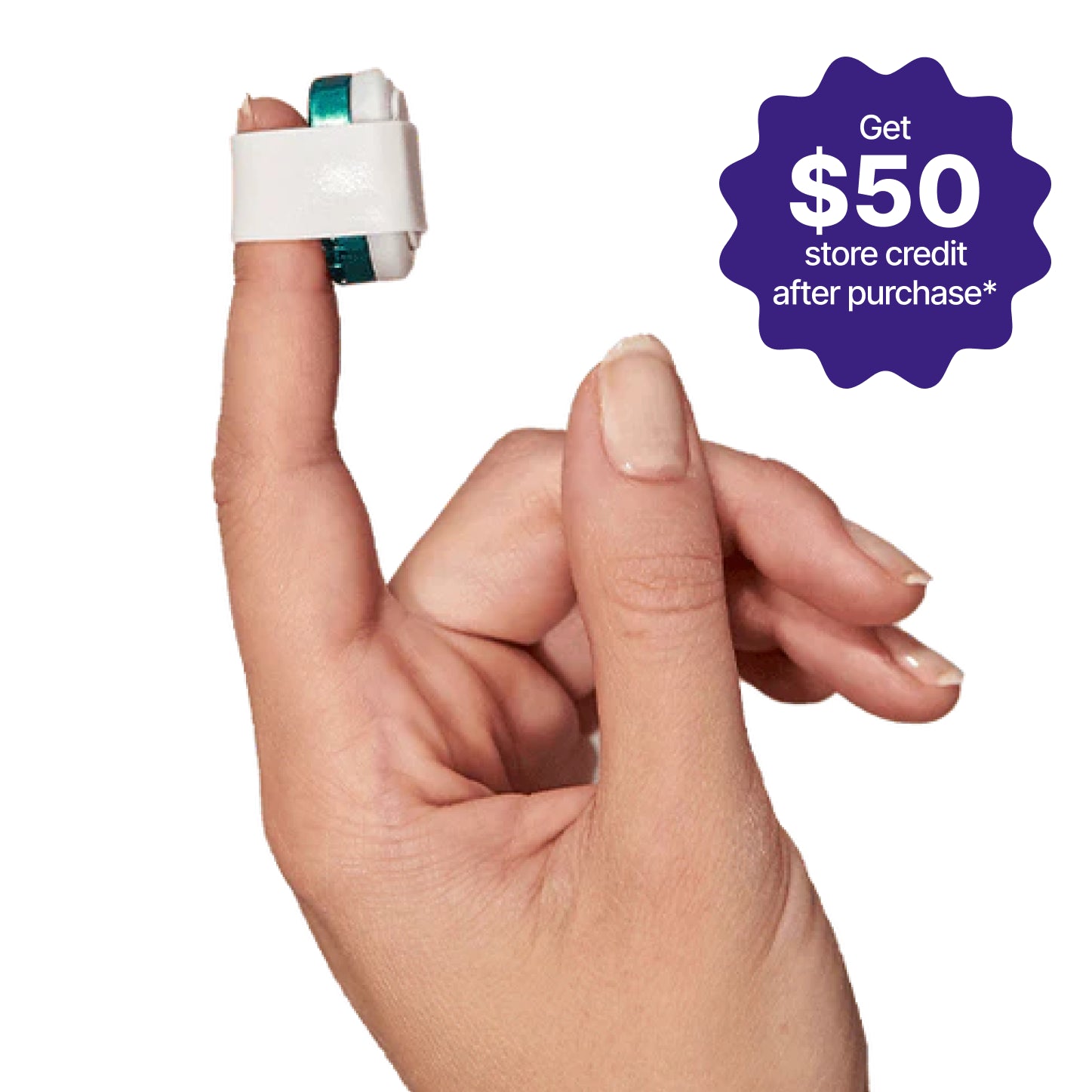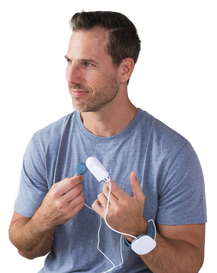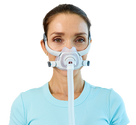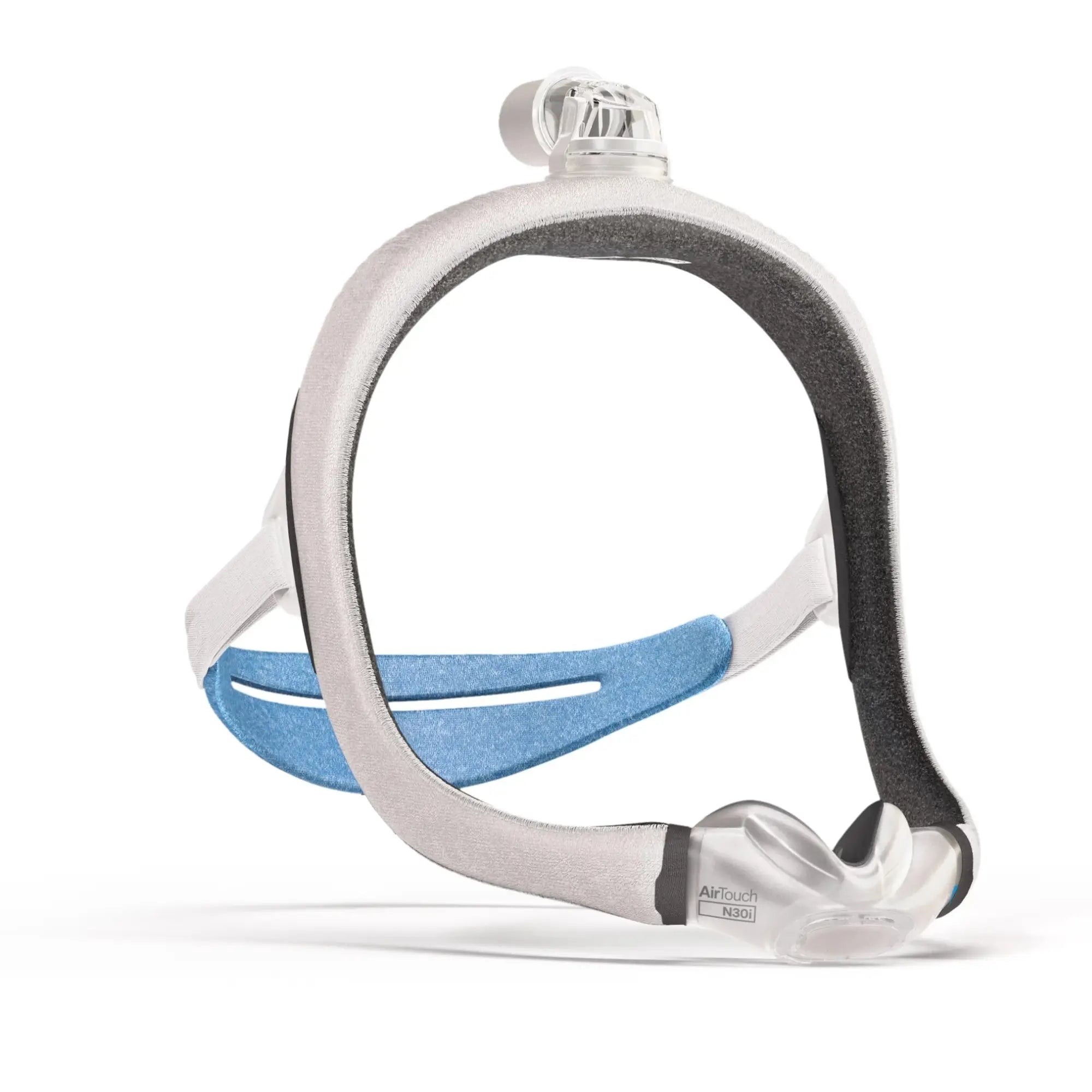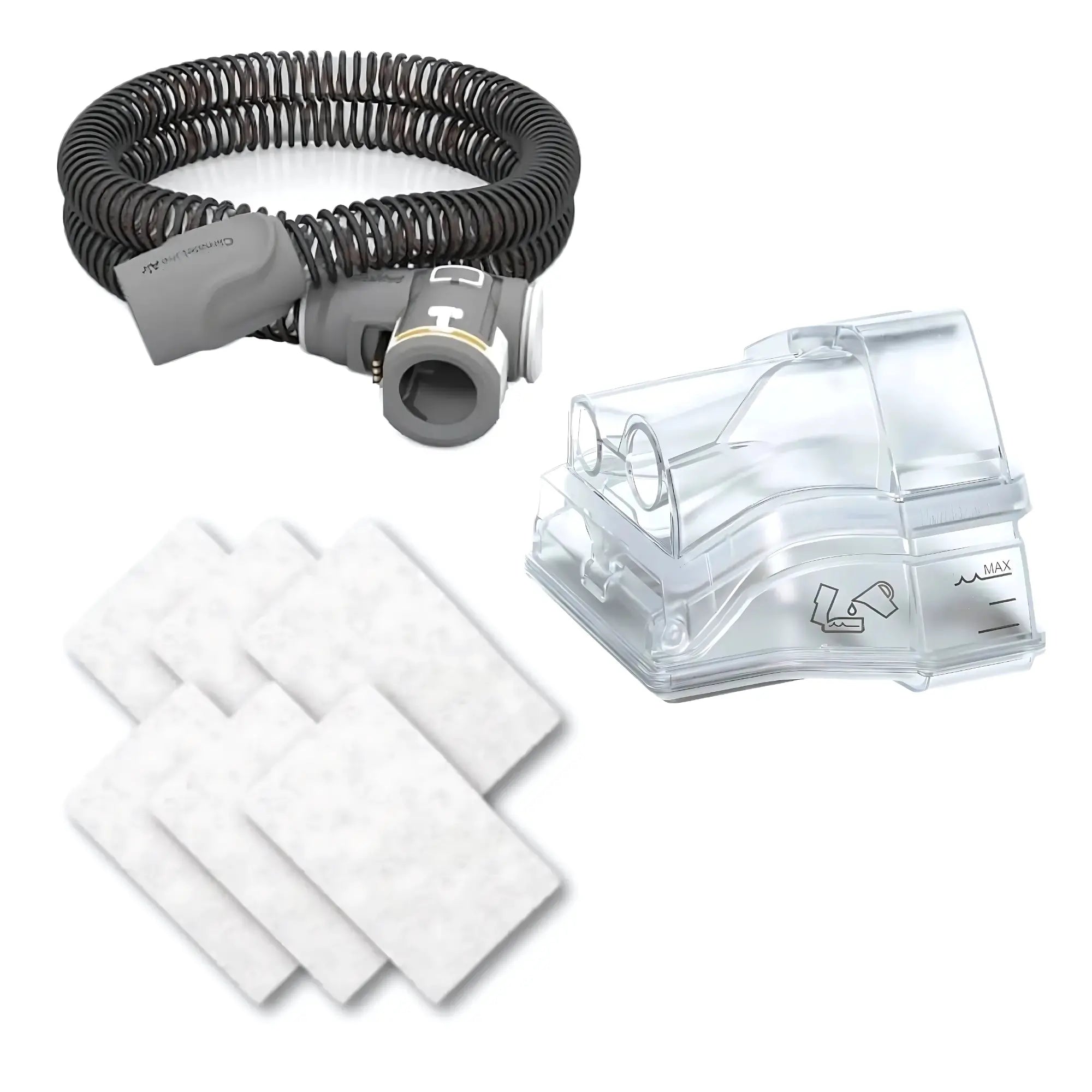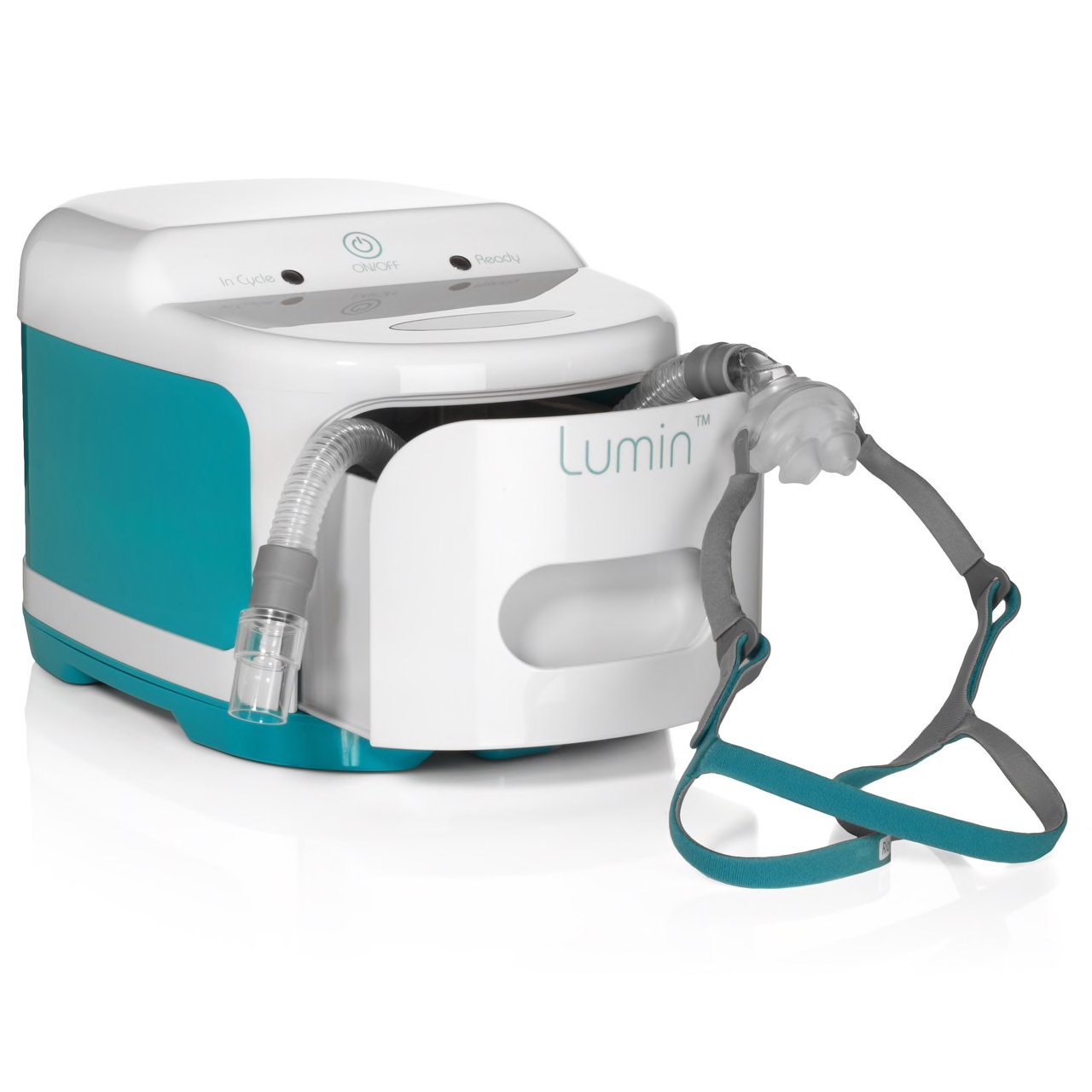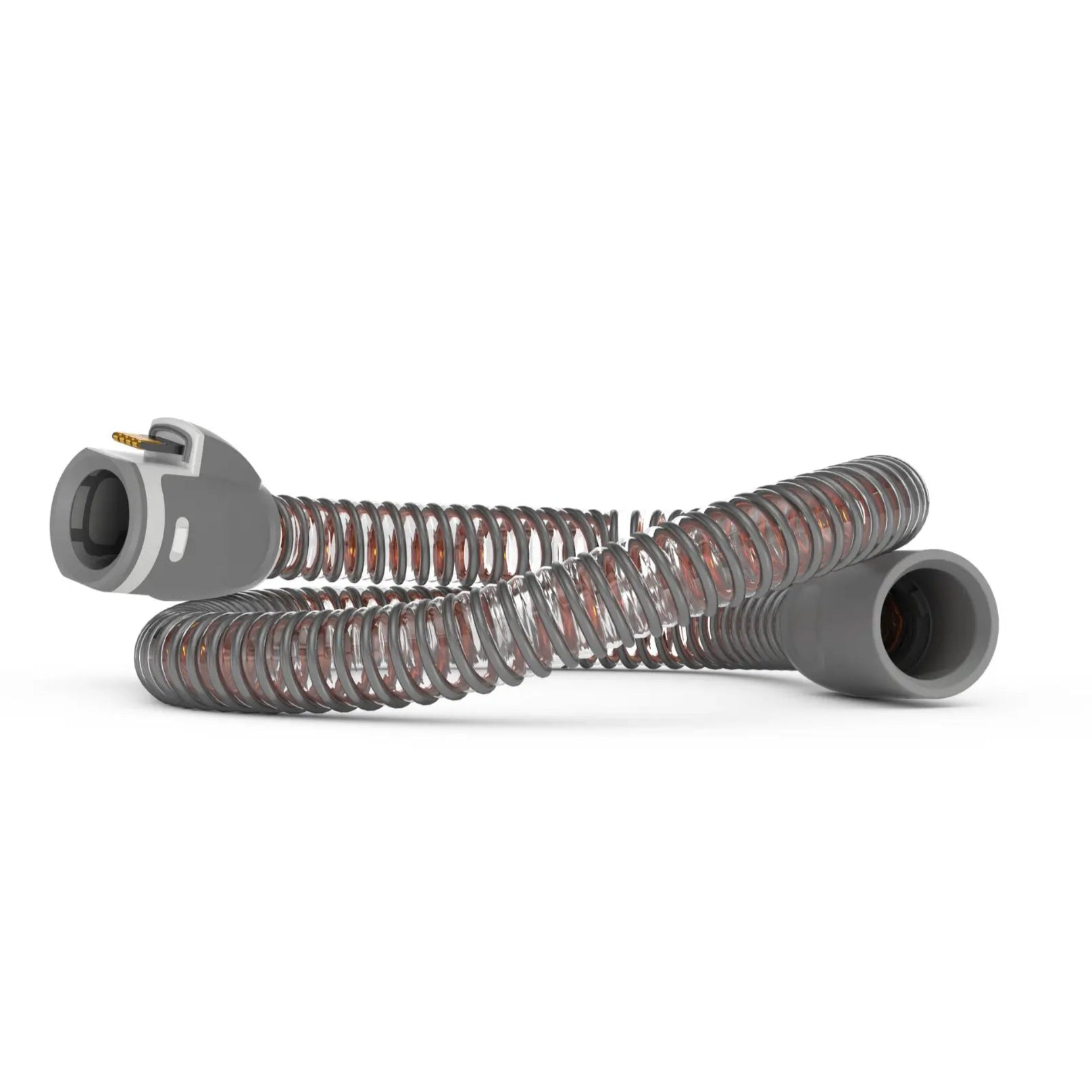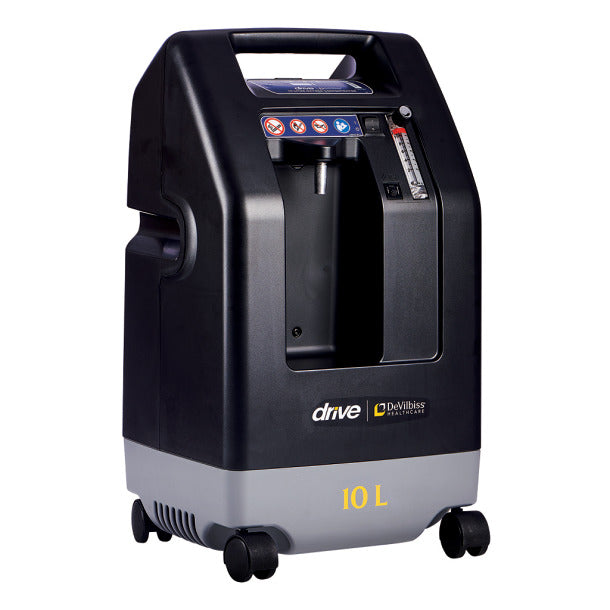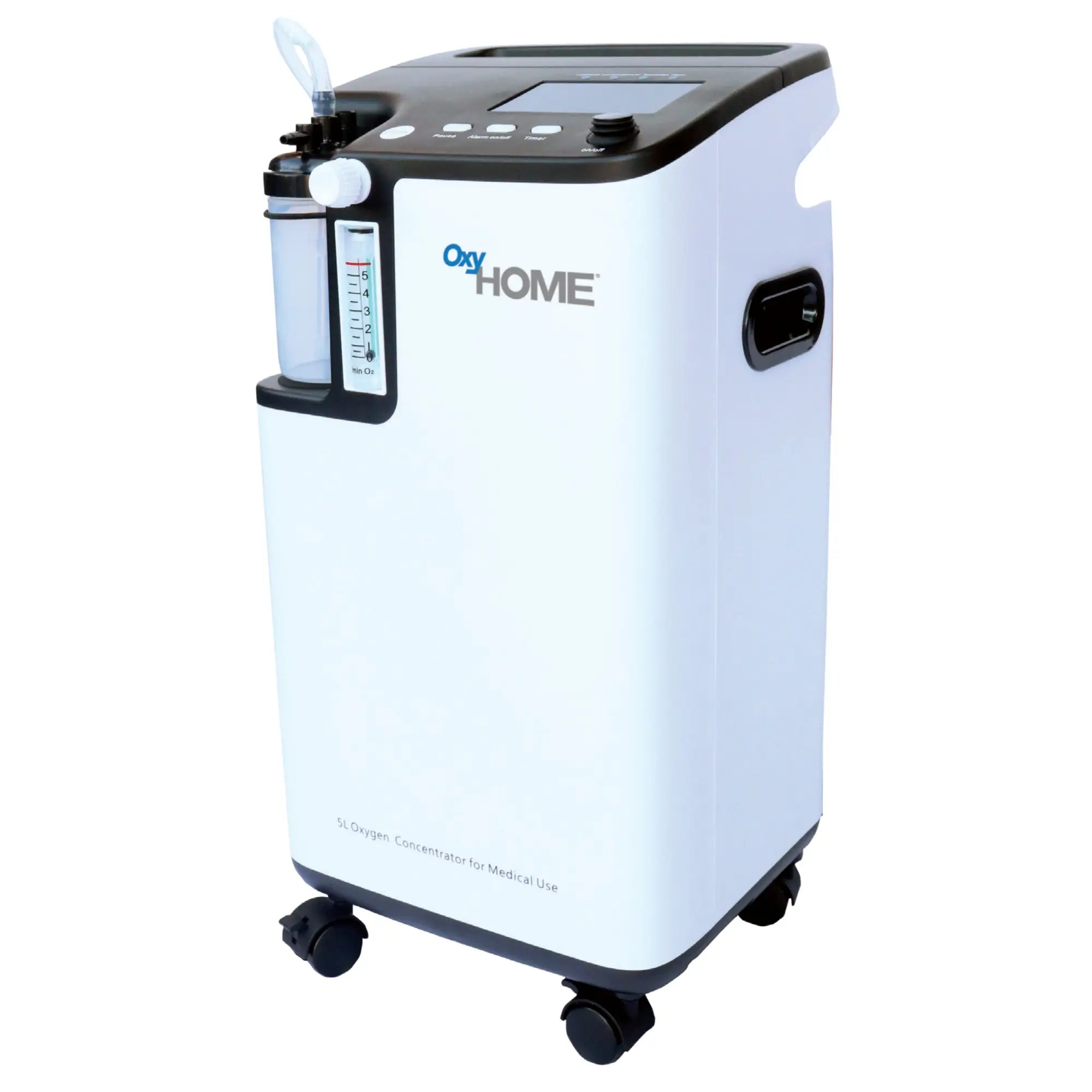Ever heard of sleep apnea? It's a serious sleep disorder where your breathing repeatedly stops and starts all night long. This disrupts your sleep, lowers oxygen levels, and causes daytime problems (more on those soon!).
Sleep Apnea is shockingly common; nearly a billion people worldwide are living with Obstructive Sleep Apnea (OSA), yet many have no idea. [1] Why? Because the most evident signs, like loud snoring or gasping for air, happen while you're asleep, they are often only noticed by a partner or flagged in a sleep study. [2]
Since the significant clues – like loud snoring, choking sounds, or actual pauses in breathing – happen while you're asleep, you're usually the last to know. It often takes a partner nudging you (or complaining!) to realize something's up. Meanwhile, feeling tired, cranky, or foggy during the day? It's easy to just blame that on stress, a busy schedule, or 'not sleeping well,' instead of the real culprit. [3] That's why paying attention to early signs is so important.
Spotting sleep apnea early isn't just about getting better sleep; it's crucial for your overall health. Left untreated, it can increase your risk for serious problems like heart disease, stroke, and type 2 diabetes. This article is your guide to recognizing the sneaky signs and symptoms in yourself or a loved one. We'll help you figure out if it's time to consider getting a sleep apnea test.
Main Types of Sleep Apnea
So, you know sleep apnea involves stopped breathing, but did you know there's more than one way it happens? Let's break down the main types: Obstructive Sleep Apnea (OSA) and Central Sleep Apnea (CSA), plus a mix of the two.
1. Obstructive Sleep Apnea (OSA)
-
What it is: This is the most common form of sleep apnea. OSA happens when the muscles at the back of your throat relax way too much during sleep. This causes a physical blockage obstructing your upper airway.
-
How it works: Imagine the muscles supporting your soft palate, uvula (that dangly thing), tonsils, and tongue. [4] When they go completely limp in OSA, your airway narrows or even collapses shut. [5] Your body keeps trying to breathe, but the air can't get past the roadblock. Your brain quickly notices the lack of oxygen and gives you a tiny nudge to wake up, just enough to tighten those muscles and reopen the airway. These wake-ups are usually so brief you won't remember them in the morning.
-
How it affects breathing: This on-off breathing cycle repeats throughout the night. We're talking anywhere from 5 to 30 times or more every single hour for some folks! This leads to fragmented, poor-quality sleep, dips in your blood oxygen levels, and puts a real strain on your heart and blood vessels over time.
-
Who's typically at risk: OSA is more likely if you're carrying extra weight (especially around the neck), naturally have a narrower throat, or have large tonsils. Things like drinking alcohol or taking sedatives before bed can also make it worse. Statistically, it's more common in men and older adults.
2. Central Sleep Apnea (CSA)
-
What it is: CSA is less common but still serious. With this type, the issue isn't a physical blockage. Instead, your brain temporarily fails to send the proper signals to the muscles that control your breathing.
-
How it works: Think of it as a neurological hiccup rather than a plumbing problem. Your brain just doesn't consistently tell your breathing muscles, "Okay, time to inhale!" This communication breakdown can sometimes be linked to other health conditions like heart failure or certain neurological diseases. Using specific medications, like opioids, can also be a trigger. [6]
-
Breathing impact: Because the brain isn't signalling, the person simply stops making an effort to breathe for short periods, causing oxygen levels to drop suddenly. Awakenings can be abrupt and might come with a feeling of shortness of breath, but often without the loud snoring or gasping sounds usually heard with OSA.
-
Who's typically at risk: CSA tends to be more common in men and people over 65. Having certain heart disorders, a history of stroke, or using narcotic medications also increases the risk. It’s often discovered when someone is being checked out for other sleep issues.
3. Complex or Mixed Sleep Apnea
-
What it is: Just like it sounds, this type is a combination, featuring elements of both OSA and CSA.
-
How it works: Often, someone starts with classic OSA, which is a physical blockage. But then, particularly when they begin treatment like CPAP (Continuous Positive Airway Pressure), central apneas also start to show up. So, even when the CPAP machine is keeping the airway open, the brain sometimes still forgets to send the signal to breathe.
-
Breathing impact: Having both types means that breathing gets interrupted in two different ways – sometimes the airway is blocked, and at other times, the breathing effort itself just stops. This dual nature can make it more challenging to treat effectively.
-
Who's typically at risk: This is often identified during follow-up sleep studies, especially if someone with diagnosed OSA doesn't respond as expected to standard CPAP therapy or continues to experience symptoms despite treatment.
Quick Comparison: OSA vs. CSA vs. Complex
Here’s a simple table to help see the differences at a glance:
|
Type |
Cause |
Breathing Impact |
Common Risk Groups |
|
OSA (Obstructive) |
Physical blockage in the throat due to relaxed muscles |
Repeated pauses despite effort to inhale |
Overweight individuals, men, older adults |
|
CSA (Central) |
Brain fails to signal breathing muscles |
Breathing stops entirely without effort |
Men, older adults, those with heart/neuro conditions |
|
Complex (Mixed) |
Combination of OSA and CSA, often seen during CPAP therapy |
Both blocked airway & loss of breathing effort |
CPAP-treated OSA patients, heart failure patients |
Most Common Symptoms
Spotting sleep apnea isn't always straightforward. Many symptoms are subtle and easily mistaken for stress, ageing, or a bad night's sleep. Often, the person with sleep apnea has no idea that anything is wrong – it's usually a partner or family member who first notices things like loud snoring or scary pauses in breathing. We can group the signs based on whether they occur at night or appear during the day. Plus, how symptoms appear can vary depending on your gender or age.
1. Nighttime Symptoms
While you're trying to catch some sleep, sleep apnea can cause a whole host of disruptions:
-
Loud, frequent snoring: Often, the first thing your partner and everyone else notices. Though not all snoring means sleep apnea. CPAP therapy usually stops snoring caused by OSA, while other anti-snoring devices can target snoring from different causes.
-
Breathing pauses (apnea events): These are actual moments, lasting several seconds or longer, where breathing stops altogether. Usually, it's a partner who catches this alarming sign.
-
Gasping, choking, or snorting sounds: Often follows a breathing pause. It's your body's reflex kicking in, struggling to get air flowing again.
-
Restless sleep: Constantly tossing and turning, kicking off the covers, or waking up tangled in your sheets can be a sign that your sleep is being disturbed.
-
Frequent nighttime awakenings: You might not even realize why you're waking up, but these brief arousals are often linked to your body reacting to breathing disruptions.
-
Waking with a dry mouth or sore throat: A common clue you've been breathing through your mouth all night, likely because your nasal passages or throat were blocked.
-
Night sweats: Waking up drenched in sweat, even when the room isn't hot, can happen, especially with more severe OSA.
-
Needing to pee frequently at night (nocturia): Yep, sleep apnea can even mess with your bladder. These nighttime bathroom trips are linked to sleep disruptions and pressure changes in your chest during apnea events.
-
Vivid dreams or nightmares: Occasionally, the fragmented sleep caused by apnea can lead to more intense or unsettling dreams.
2. Daytime Symptoms
The effects of disrupted nighttime breathing spill over into your waking hours, often causing:
-
Excessive daytime sleepiness (hypersomnia): This is the big one. Feeling overwhelmingly tired during the day, maybe even dozing off at work, while talking to someone, or worse, while driving.
-
Morning headaches: Waking up with a headache is common, likely due to low oxygen levels overnight or just plain poor sleep quality.
-
Constant fatigue and low energy: Feeling drained and unrested, no matter how many hours you think you slept. It's a bone-deep tiredness.
-
Trouble concentrating or remembering things ('brain fog'): Fragmented sleep makes it hard for your brain to function sharply, leading to difficulty focusing and memory lapses.
-
Irritability, mood swings, or feeling down: Lack of quality sleep seriously impacts your emotional control and mood. You might feel unusually grumpy, anxious, or even depressed.
-
Decreased sex drive or erectile dysfunction: Particularly common in men, untreated sleep apnea can negatively affect libido and sexual function.
-
Falling asleep during quiet activities: Nodding off easily while watching TV, reading a book, or being a passenger in a car is a major red flag for excessive sleepiness.
-
Poor performance at work or school: The build-up of sleep debt tanks your focus, productivity, and overall mental clarity, making it hard to perform at your best.
3. Symptom Differences by Gender and Age
It's also worth noting that sleep apnea doesn't look exactly the same for everyone:
Men often experience the 'classic' symptoms we think of – loud snoring, witnessed breathing pauses reported by a partner, and gasping sounds during sleep. Because these signs can be more obvious, men sometimes get diagnosed earlier.
Women, on the other hand, might report different issues more prominently. They often experience symptoms like chronic fatigue that doesn't improve with rest, insomnia (especially trouble staying asleep), morning headaches, and mood changes like depression or anxiety, rather than the loud snoring or obvious apneas. These less specific symptoms, unfortunately, mean sleep apnea can be overlooked or misdiagnosed as something else in women.
Sleep apnea in kids can also look different. Instead of obvious sleepiness, they might show signs like regular bedwetting (long after being potty-trained), difficulty paying attention in school, hyperactivity (making them seem 'wired'), mouth breathing, frequent colds or ear infections, and poor academic performance. Sometimes, these signs get mistaken for behavioral issues like ADHD, delaying the correct diagnosis.
How Do You Know If You Might Have Sleep Apnea?
Figuring out if you have sleep apnea can be tricky because, well, you're asleep when the main signs happen! Many people live with it for years without realizing it's the root cause of their daytime struggles. Often, it takes a concerned bed partner noticing strange breathing patterns, or the daytime symptoms becoming too hard to ignore, before the lightbulb goes on.
Two Routes to Discovery: Self vs. Partner Awareness
How is sleep apnea usually detected? It often comes down to noticing clues yourself or having someone else point them out.
A. Signs You Can Observe in Yourself
Even if you sleep alone or your partner hasn't mentioned anything, your body might be sending daytime signals or leaving morning-after clues. Ask yourself if you experience these:
-
Feeling exhausted despite sleeping 7+ hours
-
Finding yourself nodding off during quiet moments like watching TV, reading, or sitting in meetings?
-
Regularly waking up with headaches or a really dry mouth/sore throat?
-
Struggling with concentration, memory problems, or that persistent 'brain fog'?
-
Feeling unusually irritable, anxious, or moody for no clear reason?
-
Noticing a dip in your sex drive or battling constant fatigue despite lifestyle changes?
Important Research Notes: Experts find excessive daytime sleepiness to be one of the most common symptoms people mention when they finally seek help for undiagnosed sleep apnea.
B. Clues a Bed Partner Might Notice
Often, the most dramatic clues happen while you're asleep, making a bed partner the primary witness. If your partner has mentioned any of the following, take it seriously:
-
Loud, persistent snoring (especially if it stops and starts).
-
Noticeable pauses in breathing followed by gasping or choking.
-
Restless movements, tossing and turning
-
Snorting or sudden awakenings during the night
-
Long stretches of silence followed by abrupt noises
These nighttime observations, especially the breathing pauses and gasping, are major red flags for sleep apnea and shouldn't be brushed off.
Checklist: Could It Be Sleep Apnea?
Let's put it all together. Read through these questions and see how many sound familiar:
Self-Check: Do Any of These Sound Familiar?
-
Do you snore loudly or often? (Yes / No)
-
Has anyone told you you stop breathing in your sleep? (Yes / No)
-
Do you wake up gasping or choking? (Yes / No)
-
Do you wake up with a dry mouth or sore throat? (Yes / No)
-
Do you feel tired or irritable during the day? (Yes / No)
-
Do you struggle to concentrate or stay awake in meetings? (Yes / No)
-
Do you frequently wake up at night or have trouble staying asleep? (Yes / No)
-
Do you suffer from headaches in the morning? (Yes / No)
-
Have you gained weight recently without a clear reason? (Yes / No)
What does it mean? If you answered "Yes" to three or more of these questions, it's a strong indicator that you could be at risk for sleep apnea. It's definitely worth talking to your doctor or considering a sleep test.
Concerned You Might Have Sleep Apnea?A simple, non-invasive sleep test can help you get answers. Whether done at home or in a sleep clinic, this test monitors your breathing, heart rate, and oxygen levels to provide an accurate diagnosis. Don’t wait—early detection can prevent serious complications! |

Sleep Apnea in Children: Signs to Watch For
It might surprise you, but sleep apnea isn't just an adult problem – kids can have it too.
However, the signs often look quite different from what we see in grown-ups. Because of this, pediatric sleep apnea sometimes gets missed or mistaken for other things like ADHD, mood disorders, or just general "acting out," according to experts like the American Academy of Sleep Medicine. Knowing what to look for is key for concerned parents.
Unique Symptoms in Children
While adults often complain about daytime sleepiness, kids might show different clues, especially during the day. Here are some common signs of potential sleep apnea in children:
-
Loud snoring (though not always present)
-
Mouth breathing, especially during sleep
-
Frequent bedwetting
-
Pauses in breathing or gasping for air
-
Restless sleep or odd sleeping positions
-
Difficulty waking up in the morning
-
Daytime behavioral issues, including:
-
Irritability
-
Mood swings
-
Inattentiveness or poor concentration
-
Hyperactivity (often mistaken for ADHD)
-
Slow growth or poor weight gain
-
Frequent nighttime awakenings
-
Night terrors or sleepwalking episodes
Keep in mind that these symptoms can sometimes be subtle. You might just notice your child isn't performing well in school, seems unusually difficult, or there’s been a sudden change in their behaviour.
When to Seek Help
If you notice your child consistently showing several of these signs, it's a good idea to chat with your pediatrician or ask for a referral to a sleep specialist. Don't dismiss persistent snoring or behavioral changes tied to poor sleep. Pediatric sleep studies differ from adult ones; they are designed to be more comfortable and suitable for children.
Catching sleep apnea early in kids is really important. Treatment can prevent potential long-term issues related to their development, learning, and even heart health down the line. If you're concerned, try keeping a simple log of the symptoms you notice and when they occur. Sometimes, if you're unsure about nighttime breathing patterns, carefully making a short video recording during sleep can be helpful to show the doctor.
Risk Factors that Increase the Chance of Sleep Apnea
1. Physical Risk Factors
These have to do with your body's build and natural characteristics:
-
Being overweight or obese: This is a major one. Excess fat, especially around the neck area, can physically press on and narrow the airway, making obstruction more likely during sleep.
-
Having a large neck circumference: Specifically, measurements over about 17 inches (43 cm) for men and 16 inches (40 cm) for women are linked to a higher risk, likely because it indicates more tissue that can potentially block airflow.
-
A naturally narrowed airway: Some people are just born with a smaller throat passage. Others might develop a narrowed airway due to enlarged tonsils or adenoids – this is a common cause, especially in children.
-
Age: While sleep apnea can happen at any age, the risk tends to go up after age 40. Muscles naturally lose some tone over time, including those in the throat.
-
Male gender: Men generally have a higher risk of developing Obstructive Sleep Apnea (OSA) than pre-menopausal women. However, a woman's risk increases significantly after menopause.
-
Certain facial abnormalities: How your jaw and facial bones are shaped can impact your airway size. Things like a recessed chin or specific craniofacial structures might make obstruction more likely.
2. Lifestyle Risk Factors
These are often habits or choices that can be modified:
-
Drinking alcohol: Especially close to bedtime, alcohol relaxes the throat muscles even more than usual, increasing the chance of airway collapse. It can also interfere with the brain's normal breathing signals.
-
Smoking: Tobacco use irritates and inflames the upper airway, which can lead to swelling and fluid retention, making breathing harder during sleep.
-
Using sedatives or tranquilizers: Medications designed to relax you or help you sleep can sometimes overly relax the throat muscles or depress the central nervous system's breathing drive, worsening apnea events.
-
Sleeping position: Snoozing flat on your back (supine position) allows gravity to pull the tongue and soft tissues backward more easily, increasing the odds of blocking your airway compared to sleeping on your side.
3. Genetic & Medical Risk Factors
Your family tree and overall health also play a role:
-
Family history: If close relatives (like parents or siblings) have sleep apnea, your own risk is higher, suggesting a genetic component.
-
Having Type 2 diabetes: There's a strong link between diabetes and OSA, although the exact relationship is complex – they often occur together.
-
High blood pressure (hypertension): This frequently goes hand-in-hand with untreated sleep apnea. The stress of repeated oxygen drops can raise blood pressure.
-
Polycystic ovary syndrome (PCOS): Women with this hormonal condition seem to have an increased risk of sleep apnea.
-
Heart failure: This condition is strongly associated with Central Sleep Apnea (CSA), where the brain fails to send proper breathing signals.
-
Having had a stroke: A previous stroke can also increase the likelihood of developing CSA.
-
Chronic nasal congestion: If you constantly have a stuffy nose (due to allergies or other issues), it forces mouth breathing, which can worsen sleep apnea.
-
Using opioid pain medications: Certain narcotics, especially long-acting ones like methadone, are linked to an increased risk of Central Sleep Apnea (CSA).
Complications if Left Untreated
Here are some of the major complications linked to unmanaged sleep apnea that you should be aware of:
1. Cardiovascular Issues
This is a big one. Untreated sleep apnea puts a major strain on your heart and blood vessels. The repeated drops in oxygen and the stress of constantly waking up can lead to high blood pressure, irregular heartbeats (like atrial fibrillation or AFib), increase your risk of having a stroke, and even raise the chances of a heart attack.
2. Type 2 Diabetes
There's a strong link here. Sleep apnea can mess with your body's ability to handle sugar, increasing the risk of developing insulin resistance and eventually Type 2 diabetes. This seems related to disrupted sleep messing with stress hormones. In fact, many people diagnosed with diabetes are later found to have sleep apnea that they didn't know about.
3. Depression and Mood Disorders
Feeling constantly irritable, anxious, or down? Chronic sleep deprivation from apnea takes a toll on your mental health. It affects brain chemistry and how you regulate emotions, potentially causing or worsening symptoms of depression, anxiety, and general moodiness.
4. Cognitive Impairment
That "brain fog" isn't just in your head. Untreated sleep apnea can lead to real problems with memory, making it hard to concentrate, and reducing overall alertness. This can seriously impact your performance at work or school and affect your decision-making skills.
5. Daytime Fatigue and Accidents
Being dangerously sleepy during the day (Excessive Daytime Sleepiness or EDS) is a hallmark of untreated apnea. This dramatically increases your risk of nodding off while driving – studies show people with sleep apnea are several times more likely to be in car accidents. It also raises the risk of accidents at work or home.
6. Metabolic Syndrome
Sleep apnea, especially OSA, is often linked to a cluster of risky conditions known as metabolic syndrome. This includes having high blood pressure, unhealthy cholesterol levels, high blood sugar, and excess fat around the waist. Having this cluster significantly bumps up your risk for heart disease and stroke.
7. Sexual Dysfunction
Untreated sleep apnea can dampen your sex life. Both men and women may experience a reduced libido (sex drive), and men are more likely to suffer from erectile dysfunction. This is often due to hormone disruptions and the overall impact of poor, fragmented sleep.
8. Liver Complications
Research suggests that people with sleep apnea are more likely to show abnormal results on liver function tests. They also seem to have a higher risk of developing nonalcoholic fatty liver disease (NAFLD), a condition where excess fat builds up in the liver.
9. Surgical and Anesthesia Risks
Heading into surgery? Having undiagnosed or untreated sleep apnea puts you at greater risk for complications, especially when under sedation or general anesthesia. Breathing problems can become more severe when your airway muscles are extra relaxed.
10. Sleep-Deprived Partners
Let's not forget the person sleeping next to you! The loud snoring, gasping, and choking sounds associated with sleep apnea often wake bed partners repeatedly throughout the night. This disrupts their sleep quality and can impact their health and well-being, too.
Sleep Apnea Test: What to Expect
Getting tested for sleep apnea is easier than ever, thanks to convenient and effective home sleep apnea tests (HSATs) like the NightOwl sleep test device. These modern tests are FDA-cleared, meaning they meet safety and accuracy standards, and they're designed to be non-intrusive. The best part? You take the test in the comfort and privacy of your own home – perfect if you have a busy schedule or just prefer your own bed over a clinic setup.
1. What Does a Sleep Apnea Test Like NightOwl Diagnose?
So, what exactly does a home sleep test check for? In simple terms, a device like the NightOwl specifically looks for signs of Obstructive Sleep Apnea (OSA). It does this by tracking key indicators while you sleep, including:
-
Your blood oxygen saturation (SpO2) levels (to see if they dip).
-
Your heart rate and its variability.
-
How often is your breathing interrupted (these are the apnea and hypopnea events)?
-
General sleep pattern irregularities.
It’s important to know that while highly effective for OSA, this type of home test typically does not diagnose Central Sleep Apnea (CSA) and cannot determine the exact pressure settings needed for CPAP therapy (that usually requires further steps if treatment is needed).
2. How the NightOwl Home Sleep Test Works

The NightOwl system is designed to be straightforward:
-
Order Online: You can usually order the test kit directly online, and it’s delivered right to your doorstep. In many places, like here in Nigeria, you often don't need a doctor's prescription to get started.
-
Download the App: Get the NightOwl companion app on your smartphone (it’s available for both iOS and Android).
-
Pair the Device: Follow the simple in-app instructions to connect the small sensor to your phone via Bluetooth.
-
Apply the Sensor: Just before bed, attach the small, comfortable sensor to your finger. It uses a gentle adhesive strip to stay put securely overnight.
-
Sleep Normally: Head to bed and sleep like you usually do. The NightOwl test typically records data over multiple nights (often 3), giving a more realistic picture of your sleep patterns compared to a single night in a lab.
-
Automatic Data Upload: While you sleep (or when you wake up and sync), the app securely transmits your encrypted sleep data over the internet to be reviewed by licensed physicians.
-
Get Your Report: Within a few business days, you'll receive a detailed report with the findings. If OSA is diagnosed, the report will often include recommendations or potential treatment options discussed by a sleep specialist.
3. Key Benefits of the NightOwl Home Sleep Test
Why choose a home test like NightOwl? Here are some advantages:
-
At-Home Convenience: No need to schedule appointments, travel to a clinic, or sleep in an unfamiliar bed.
-
Disposable Sensor: The finger sensor is typically single-use and disposable, so there's no need to worry about returning equipment – it's hygienic and hassle-free.
-
Multi-Night Testing: Recording data over several nights provides a more accurate assessment of your sleep, accounting for night-to-night variability.
-
Real-Time Data: You can often see some of your sleep insights directly in the app shortly after waking up.
-
Physician Review: Your results aren't just raw data; they are professionally interpreted by a board-certified sleep physician who provides the final diagnosis and recommendations.
-
DOT Approved: For commercial drivers (like truck drivers) needing testing for licensing, NightOwl is often approved for Department of Transportation (DOT) physicals.
4. How to Prepare for the Test
To get the most accurate results from your NightOwl test, follow these simple tips:
-
Make sure your smartphone is fully charged and kept relatively close by your bedside overnight.
-
Enable Bluetooth on your phone and make sure you've installed and set up the NightOwl app before you plan to start the test.
-
Wash and thoroughly dry your hands before applying the finger sensor to ensure good contact.
-
Try to avoid caffeine (coffee, tea, energy drinks) and alcohol for several hours before bedtime on the nights you're testing, as these can interfere with sleep patterns.
-
Most importantly: Sleep as you normally would! Don't change your usual sleep position or routine; the goal is to capture your typical night's sleep.
|
Ready to Find Out If You Have Sleep Apnea? Order the NightOwl home sleep test today and get accurate results reviewed by a certified sleep physician—all without leaving your home. Get the answers you need to start sleeping (and feeling) better. |
FAQs
What are the signs of sleep apnea?
Common signs include loud snoring, observed pauses in breathing during sleep, gasping or choking for air, restless sleep, and waking with a dry mouth or headache. During the day, you might feel excessively tired, have trouble concentrating (brain fog), feel irritable, or even fall asleep unintentionally.
How do you know if you have sleep apnea?
Often, you might not realize it yourself since the main events happen while you're asleep. A partner noticing your snoring and breathing pauses is a big clue. Otherwise, persistent daytime symptoms like extreme fatigue despite sleeping enough hours, morning headaches, or unexplained moodiness should prompt you to consider getting checked out via a sleep test.
What are the different types of sleep apnea?
There are three main kinds: Obstructive Sleep Apnea (OSA), which is the most common and happens when your airway gets physically blocked; Central Sleep Apnea (CSA), where your brain doesn't consistently signal your muscles to breathe; and Complex or Mixed Sleep Apnea, which is a combination of both OSA and CSA.
Is snoring always a sign of sleep apnea?
No, not every snorer has sleep apnea. Simple snoring can happen sometimes. However, loud, frequent, and disruptive snoring, especially if it's interrupted by pauses or gasping sounds, is a very strong indicator of Obstructive Sleep Apnea and definitely worth investigating further.
Why do I snore so loudly?
Snoring happens when air struggles to get through a narrowed passage at the back of your throat, causing tissues like the soft palate and uvula to vibrate. In sleep apnea, these tissues relax too much, narrowing the airway significantly or blocking it, which can often lead to particularly loud and irregular snoring sounds.
Why do I wake up gasping for air?
That scary gasping or choking feeling is usually your body's emergency response after your breathing has stopped (an apnea event). Your brain senses the dangerous drop in oxygen or rise in carbon dioxide and triggers a sudden, brief awakening to force your airway open and make you take a breath.
Why do I wake up with a dry mouth?
Waking up feeling like your mouth is full of cotton is often because you've been breathing through your mouth all night instead of your nose. This frequently happens in sleep apnea because your nasal passages might be congested, or more commonly, your airway is obstructed, forcing you to mouth breathe to try and get enough air.
Why do I wake up frequently to urinate?
Needing to get up multiple times a night to pee (called nocturia) can actually be linked to sleep apnea. The changes in chest pressure during apnea events and the frequent sleep disruptions can affect hormones that control urine production, signaling your bladder it's full more often than it should.
Why am I always tired even after sleeping?
This is a classic sign called excessive daytime sleepiness (EDS). Even if you spend 7-8 hours in bed, sleep apnea constantly interrupts your sleep with breathing pauses and brief awakenings. This prevents you from getting enough deep, restorative sleep, leaving you feeling exhausted the next day.
Why do I have morning headaches?
Waking up with a headache is common in sleep apnea, often due to lower-than-normal oxygen levels or higher carbon dioxide levels in your blood overnight, caused by the breathing disruptions. Poor, fragmented sleep quality also contributes to these headaches.
Does sleep apnea cause brain fog?
Yes, definitely. The lack of quality, consolidated sleep, and potential dips in oxygen supply to the brain directly impact cognitive functions. This leads to that frustrating 'brain fog' – difficulty concentrating, problems with memory, and reduced mental sharpness.
Can sleep apnea cause mood swings?
Absolutely. Chronic sleep deprivation significantly impacts your brain's ability to regulate emotions. This can make you feel more irritable, anxious, or easily stressed, or even contribute to symptoms of depression if sleep apnea goes untreated.
What are the signs of sleep apnea in children?
Kids often show different signs than adults. Look out for habitual snoring, breathing through the mouth (day or night), pauses in breathing or gasping, restless sleep, frequent bedwetting (after being dry), difficulty waking up, and daytime issues like hyperactivity, inattention, irritability, or poor school performance.
Can sleep apnea affect my child's school performance?
Yes, significantly. The poor sleep quality can lead to difficulty concentrating, hyperactivity, learning problems, and daytime sleepiness (though sometimes kids appear 'wired' instead of tired). This can easily be mistaken for ADHD, but might actually stem from untreated sleep apnea.
Why does my child mouth breathe?
Consistent mouth breathing, especially during sleep, often happens because the child can't breathe comfortably through their nose. This might be due to temporary congestion, allergies, or, more commonly in sleep apnea cases, enlarged tonsils or adenoids physically blocking the nasal or upper airway.
Is bedwetting a sign of sleep apnea in kids?
It can be, especially if a child starts wetting the bed again after having been consistently dry at night. The sleep disruptions and hormonal changes caused by sleep apnea can interfere with bladder control during sleep.
What are the risk factors for sleep apnea?
Key factors include being overweight (especially excess neck fat), having a large neck size, older age, being male, having a family history of sleep apnea, using alcohol or sedatives, smoking, and having certain medical conditions like diabetes, high blood pressure, or heart failure.
Does being overweight cause sleep apnea?
Being overweight is one of the biggest risk factors for Obstructive Sleep Apnea (OSA). Extra fatty tissue around the neck and throat can narrow the airway and make it more likely to collapse during sleep when muscles relax.
Is sleep apnea genetic?
There appears to be a genetic link. If your close family members (parents, siblings) have sleep apnea, your own risk is higher. This might be due to inheriting certain physical traits like facial structure or airway anatomy that predispose you to the condition.
Does age increase my risk for sleep apnea?
Yes, generally speaking, the risk of developing sleep apnea increases as you get older, particularly after age 40. This is partly because throat muscles can naturally lose some tone with age, making airway collapse more likely, but younger adults and children can certainly have it too.
Can lifestyle choices affect my risk for sleep apnea?
Definitely. Choices like drinking alcohol (especially near bedtime), smoking, using certain sedating medications, and consistently sleeping on your back can all increase your likelihood of developing sleep apnea or make existing symptoms worse.
What are the long-term effects of sleep apnea?
Ignoring sleep apnea can lead to serious health consequences over time. These include a higher risk of high blood pressure, heart attack, stroke, irregular heart rhythms (like AFib), type 2 diabetes, worsening depression or anxiety, cognitive decline, liver problems, and an increased risk of accidents due to excessive sleepiness.
Can sleep apnea cause heart problems?
Yes, untreated sleep apnea puts significant strain on your cardiovascular system. The repeated drops in oxygen and surges in stress hormones increase the risk for high blood pressure, coronary artery disease, heart attack, heart failure, and stroke.
Can sleep apnea kill you?
Directly stopping breathing and dying in your sleep from apnea itself is rare. However, the serious long-term health complications it causes, like heart attacks, strokes, and fatal accidents caused by falling asleep while driving, absolutely can be life-threatening if the condition is left untreated.
Can sleep apnea cause diabetes?
There's a strong connection. Sleep apnea is linked to an increased risk of developing insulin resistance and Type 2 diabetes. The disrupted sleep and stress on the body seem to interfere with how your body processes sugar.
What are the dangers of untreated sleep apnea?
The dangers are essentially the list of serious health complications: increased risk of potentially fatal cardiovascular events (heart attack, stroke), developing Type 2 diabetes, accidents caused by excessive daytime sleepiness, significant cognitive impairment ('brain fog'), mood disorders, and a generally reduced quality of life.
How is sleep apnea diagnosed?
Diagnosis typically requires a sleep study. This can often be done conveniently using a Home Sleep Apnea Test (HSAT), like the NightOwl system available here in Nigeria, which you use in your own bed. Alternatively, a more detailed overnight study (polysomnography) can be done in a specialized sleep clinic.
What is a home sleep test?
A home sleep test (HSAT) is a simplified sleep study you do yourself at home. Devices like NightOwl use sensors (often just on your finger) to record key information like your breathing patterns, oxygen levels, and heart rate while you sleep, primarily looking for signs of Obstructive Sleep Apnea.
When should I get tested for sleep apnea?
You should consider getting tested if you have common symptoms like loud snoring plus daytime sleepiness, if your partner reports you stop breathing or gasp during sleep, or if you experience things like morning headaches, brain fog, or unexplained fatigue consistently. Talking to your doctor about your symptoms is the first step.
Is a home sleep apnea test accurate?
Yes, for diagnosing Obstructive Sleep Apnea (OSA) in most adults, modern FDA-cleared home tests like NightOwl are considered reliable and accurate when instructions are followed correctly. They are a convenient first step for many people.
Can sleep apnea be cured?
While a complete "cure" isn't always possible, sleep apnea is highly treatable. Effective treatments like CPAP therapy can eliminate symptoms and prevent complications. Lifestyle changes like weight loss can significantly improve or even resolve OSA in some cases. For specific causes, like enlarged tonsils in children, surgery might provide a cure.
References
-
Cleveland Clinic. "Sleep Apnea." Cleveland Clinic, 25 July 2024, my.clevelandclinic.org/health/diseases/8718-sleep-apnea. Accessed 18 Apr. 2025.
-
Johns Hopkins Medicine. "4 Signs You Might Have Sleep Apnea." Johns Hopkins Medicine, www.hopkinsmedicine.org/health/wellness-and-prevention/4-signs-you-might-have-sleep-apnea. Accessed 18 Apr. 2025.
-
WebMD Editorial Contributors. "Symptoms of Sleep Apnea." WebMD, 10 Sep. 2024, www.webmd.com/sleep-disorders/sleep-apnea/symptoms-of-sleep-apnea. Accessed 18 Apr. 2025.
-
Mayo Clinic Staff. "Sleep apnea - Symptoms and causes." Mayo Clinic, 14 Aug. 2024, www.mayoclinic.org/diseases-conditions/sleep-apnea/symptoms-causes/syc-20377631. Accessed 18 Apr. 2025.
-
American Lung Association. "Sleep Apnea Symptoms and Diagnosis." American Lung Association, 5 June 2024, www.lung.org/lung-health-diseases/lung-disease-lookup/sleep-apnea/symptoms-diagnosis. Accessed 18 Apr. 2025.
-
National Heart, Lung, and Blood Institute. "Sleep Apnea - Signs, Symptoms, and Complications." National Heart, Lung, and Blood Institute, 24 Mar. 2023, www.nhlbi.nih.gov/health/sleep-apnea/symptoms. Accessed 18 Apr. 2025.
